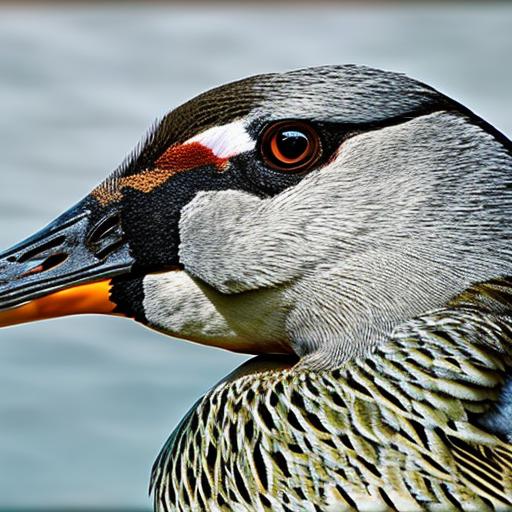Geese are fascinating creatures that have adapted to various environments around the world. They are known for their distinctive honking calls and V-shaped flight formations during migration. Geese are also well adapted to dealing with heat and have developed several cooling mechanisms to regulate their body temperature. These mechanisms are crucial for their survival, especially in warmer climates where they may be exposed to high temperatures for extended periods of time.
Key Takeaways
- Geese have unique cooling mechanisms to regulate their body temperature, including feathers, behavior, and panting.
- Feathers play a crucial role in insulation, helping geese stay warm in cold temperatures and cool in hot temperatures.
- Geese seek shade to escape the heat and regulate their body temperature, often congregating in shaded areas.
- Cooling off in water is a common behavior for geese, as it helps them dissipate heat and regulate their body temperature.
- Panting is an important thermoregulation mechanism for geese, allowing them to release excess heat and maintain a stable body temperature.
Feathers and Insulation
One of the key ways that geese stay cool is through their feathers. Geese have a dense layer of feathers that provide excellent insulation, helping to regulate their body temperature in both hot and cold environments. During hot weather, geese can fluff up their feathers to create air pockets that act as insulation, keeping them cool by preventing direct heat from reaching their bodies. This adaptation allows them to maintain a comfortable body temperature even in the face of extreme heat. Additionally, the outer layer of feathers on geese is coated with natural oils that repel water, helping to keep them dry and cool when they are exposed to water or rain.
In addition to their feathers, geese also have a unique blood circulation system that helps them stay cool. Their blood vessels are located close to the surface of their skin, allowing them to release excess heat through a process called vasodilation. This means that when geese are exposed to high temperatures, their blood vessels dilate, allowing more blood to flow near the surface of their skin where it can release heat into the environment. This process helps to prevent overheating and allows geese to maintain a stable body temperature even in hot weather.
Behavior and Shade Seeking
Geese also exhibit specific behaviors to help them stay cool in hot weather. One of these behaviors is seeking shade. When the sun is at its peak and temperatures are high, geese will often seek out shaded areas such as under trees or in tall grass to escape the direct heat. By finding shade, geese can lower their body temperature and reduce the risk of overheating. In addition to seeking shade, geese may also adjust their activity levels during the hottest parts of the day, choosing to rest and conserve energy rather than engaging in strenuous activities that could raise their body temperature.
Another behavior that geese exhibit to stay cool is spreading their wings. When temperatures are high, geese may spread their wings out to increase airflow over their bodies, helping to dissipate heat and regulate their body temperature. This behavior is particularly common in waterfowl, as it allows them to take advantage of any available breeze to stay cool. By spreading their wings, geese can effectively increase their surface area and enhance the cooling effect of air movement, providing relief from the heat.
Cooling Off in Water
Water plays a crucial role in helping geese stay cool during hot weather. Geese are well adapted to aquatic environments and will often seek out bodies of water such as lakes, rivers, or ponds to cool off. When they are in the water, geese can submerge themselves partially or fully, allowing the water to dissipate heat from their bodies. This behavior is especially important during the hottest parts of the day when temperatures are at their peak.
In addition to using water for direct cooling, geese also take advantage of evaporative cooling. When geese are in the water, they may splash or bathe themselves, wetting their feathers and allowing the water to evaporate off their bodies. This process helps to lower their body temperature by removing excess heat through evaporation, similar to how sweating works in humans. By utilizing water for cooling purposes, geese can effectively regulate their body temperature and avoid the negative effects of overheating.
Panting and Thermoregulation
Another important cooling mechanism that geese use is panting. When temperatures are high, geese may pant rapidly, which helps them release excess heat from their bodies. Panting increases the rate of evaporation from the respiratory surfaces in the mouth and throat, allowing geese to cool down by expelling heat through their breath. This behavior is particularly common in birds and is an effective way for geese to regulate their body temperature when faced with extreme heat.
In addition to panting, geese also engage in thermoregulation by adjusting their metabolic rate. When temperatures are high, geese may reduce their activity levels and metabolic rate to conserve energy and minimize heat production. By slowing down their metabolism, geese can reduce the amount of internal heat generated by their bodies, helping them maintain a stable body temperature in hot weather. This adaptive response allows geese to cope with high temperatures and avoid the risk of overheating.
Migration and Seasonal Adaptations

Migration plays a significant role in helping geese cope with changing seasons and temperatures. Many species of geese are migratory birds that travel long distances between breeding and wintering grounds. During migration, geese can escape from extreme heat by moving to cooler regions where they can find suitable habitats and food sources. This seasonal movement allows geese to avoid the challenges of coping with high temperatures in their breeding areas and ensures their survival in changing environments.
In addition to migration, geese have also developed seasonal adaptations to cope with hot weather. For example, some species of geese molt during the summer months, shedding old feathers and growing new ones that are better suited for regulating body temperature in warm conditions. This molting process allows geese to maintain effective insulation and stay cool during hot weather, ensuring that they can thrive in their natural habitats throughout the year.
Human Impact and Conservation Efforts
Human activities have had a significant impact on geese and their habitats, which has implications for their ability to cope with heat and other environmental challenges. Habitat loss, pollution, climate change, and hunting are just a few of the threats that geese face today. These factors can disrupt the natural cooling mechanisms of geese and make it more difficult for them to survive in changing environments.
Conservation efforts play a crucial role in protecting geese and ensuring that they can continue to thrive in the face of human impact. Conservation measures such as habitat restoration, protected areas, and regulations on hunting can help mitigate the negative effects of human activities on geese populations. By preserving natural habitats and reducing human disturbances, conservation efforts can support the ability of geese to cope with heat and other environmental stressors.
In conclusion, geese have developed a range of fascinating cooling mechanisms that allow them to regulate their body temperature in hot weather. From feathers and insulation to behaviors such as seeking shade and using water for cooling purposes, geese have adapted well to cope with high temperatures. Understanding these cooling mechanisms is essential for conservation efforts aimed at protecting geese and ensuring their survival in changing environments. By recognizing the importance of these adaptations and taking steps to mitigate human impact on geese populations, we can help ensure that these remarkable birds continue to thrive for generations to come.
Geese are fascinating creatures, and understanding how they keep cool is essential for their well-being. In a related article on PoultryWizard, you can learn about turning a shed into a chicken coop, which can also provide valuable insights into creating a suitable environment for geese. By understanding the principles of coop design and ventilation, you can ensure that your geese have a comfortable and safe space to thrive. Check out the article here to discover more about creating an ideal living space for poultry.
Meet Walter, the feathered-friend fanatic of Florida! Nestled in the sunshine state, Walter struts through life with his feathered companions, clucking his way to happiness. With a coop that’s fancier than a five-star hotel, he’s the Don Juan of the chicken world. When he’s not teaching his hens to do the cha-cha, you’ll find him in a heated debate with his prized rooster, Sir Clucks-a-Lot. Walter’s poultry passion is no yolk; he’s the sunny-side-up guy you never knew you needed in your flock of friends!







